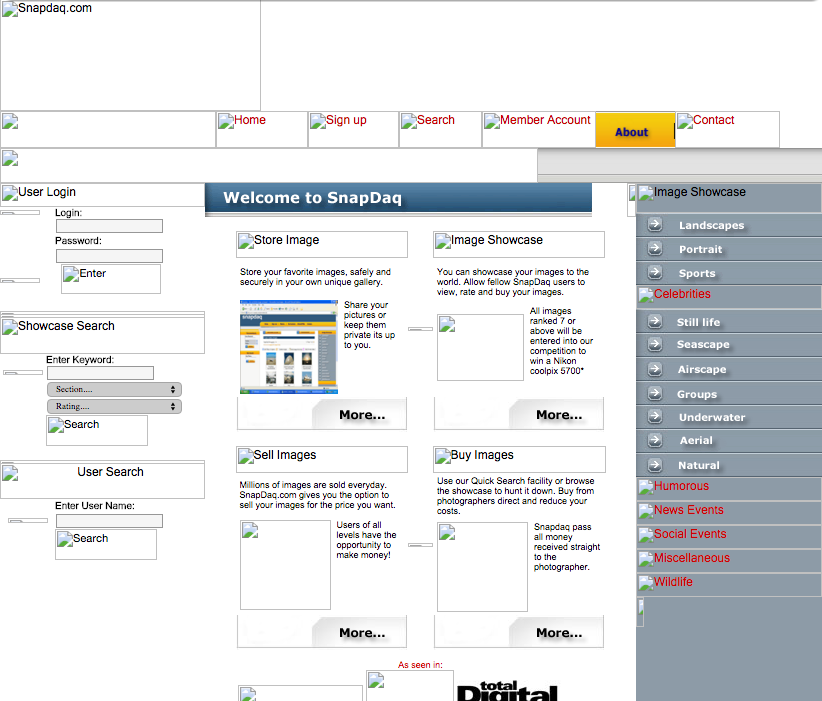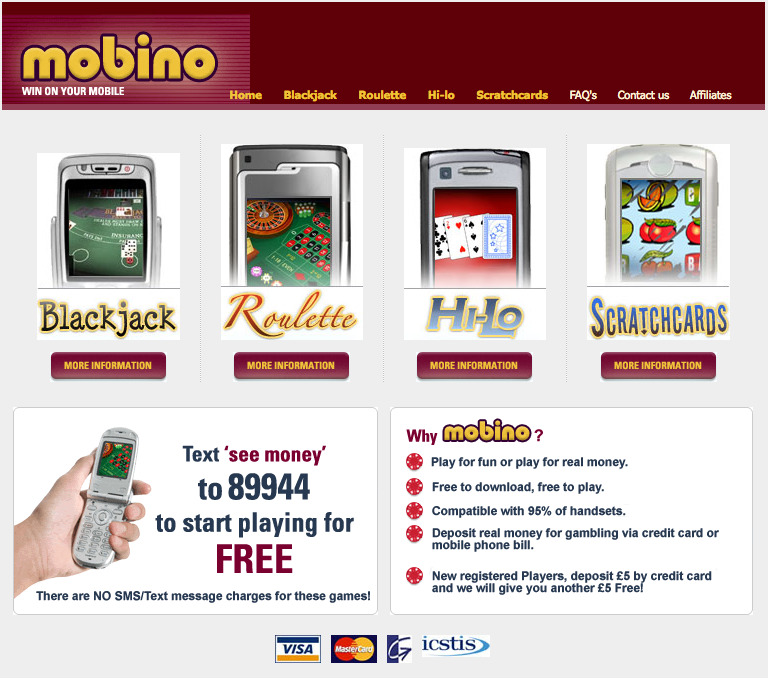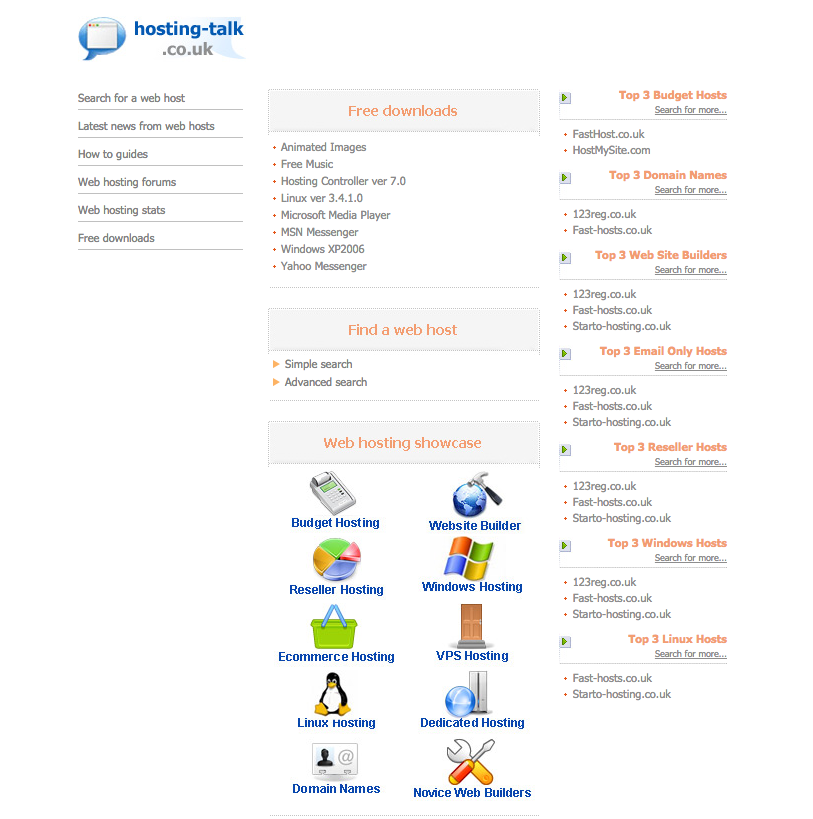3 (more!) of my business failures and why they didn’t work
Last year I tried to lay some ghosts to rest by writing about a few business failures I’ve been a part of.
It’s a sad fact: most businesses die. Any successful entrepreneur is likely to have lived through it more than once. Whilst I’ve notched up a couple of fair-to-middling businesses (they’re still going at any rate!), I’ve got a nice string of flops too.
When I talk about this stuff during presentations I joke that failure should make you stronger. But that’s not what it feels like when it’s happening to you.
By looking back, however, it’s possible to unpick the errors. To learn from what went wrong.
With that in mind, here are a few more disasters on my balance sheet, and what I learned from the experience. (This might not be the final post on this topic – I’ve got plenty of business bombs to choose from!)
Snapdaq
Have you heard of iStockphoto? Shutterstock? Photography was one of the first industries to have its potential set free by the power of the Internet. And these two brands are amongst many to have turned that concept into huge revenue.
The web brought the opportunity to store, display and transact digital assets. Photographers could self-publish, for virtually nothing. Location was no longer important.
We saw a new angle. The ability to sell photos could be expanded beyond professional photographers to anyone with a camera and access to the Internet. Anyone had the potential to make money from photography.
And so: Snapdaq was launched.
Anyone could store, sell and buy photos via our system. The community could rate photos. Those voted popular would gain more visibility, and therefore be more likely to be bought and sold.
Least of my regrets are the lack of surviving mockups. This is all I could grab from the Wayback Machine:

How did we get on?
It depends how you measure it! We certainly gained decent traction to start with.
Thanks to our links with Future and Imagine Publishing we were able to get great reviews in most of the photography magazines. Avid readers were keen to learn how to turn their passion into cash.
For the first few months we grew at a rate of around 3-4 sales a day. That might not sound much but it was a subscription business with over 80% margin.
Customers paid monthly, and having already built the platform our ongoing service costs were low. So as long as we kept churn rates low too, we had a solid business on our hands.
Why did it fail?
Growth plateaued. Having converted the early adopters, we stopped acquiring customers.
We put this down to a few reasons:
1. The platform had a poor user interface. Whether you were browsing photos, opening an account, or uploading; it all looked ugly.
Photographers are visual people so we really paid the price for this weakness.
2. We were unable to foster a community that not only wanted to sell their photos but to browse and rate others too. We spent a lot of time in photography forums asking people to check out the site. A few clicked through and ‘liked’ one or two, but the effect was limited.
3. We lacked marketing budget. Having gained reviews in the core press titles, we didn’t know what to do next. We had hoped that the brand would grow virally as photographers shared their experiences of making money from their collection. That didn’t happen, and we didn’t have a plan B.
4. Last but not least: Fotolia came along. A quality platform that was easy to use and looked great. We started looking very Internet 1.0.
What did we learn?
1. Concentrate on making a beautiful thing. Even systems that are feature-lite need to be enjoyable to user. This applies more so when your audience value the visual.
2. Have a variety of ways to grow your audience. Your marketing plan should have both range and depth. Don’t rely on one mechanism to give you growth.
With Snapdaq we had first-mover advantage. But as I’ve written about before, this turned out to be more handicap than help. If there’s an existing brand offering a service, at least you have something to be inspired by.
Mobino
Back in the mid-noughties, gambling was catapulted from a niche after-hours activity to a mainstream hobby. Las Vegas had come to the UK.
The 2005 Gambling Act, which came into force in 2007, led to a huge expansion of gambling outlets. And the Internet brought gambling to every web browser. A slew of online gambling brands were launched to capitalize on the nation’s new favorites pastime.
In parallel, 2007 was another year hailed as ‘The year of the mobile’. Whilst the epithet has become a running joke, 2007 certainly deserved its place in history since it marked the launch of something called the “iPhone”.
We tried to bring these two trends together with a mobile-first gambling experience. Introducing: Mobino.co.uk.
This was a downloadable free-to-play mobile gambling platform allowing users to choose from popular casino games. The idea was to get people engaged with the free-play games, and then reverse SMS charge their phone bills for the gambling stakes.
Now I wonder what I did with my summer that year…

How did we get on?
Whilst the idea was good, we encountered lots of paperwork. And that meant costs.
There are lots of legal and technical requirements in the provision of online gambling, and this headache caused a backlog as we went to market.
We signed a gambling license that headquartered us in Malta. At the same time we had to license the gambling platform from a third party, and then build it into our own front end. The licensing agreement of course wasn’t cheap, and until we went “live” there were no revenues to offset the cost.
But it was only once we had actually launched that we realised the size of the task ahead. We had precious little budget left over for marketing; and lacked a clear idea on how to reach new players.
Remember this was pre-smartphone. Mobiles had small screens, downloads were slow and unfamiliar, and there was no AppStore. The concept of ‘App marketing’ hadn’t even been born.
We relied on what we knew: search marketing of our website. But how do you market a product, using search when no-one is actually searching for it?
These days of course you can fall back on content marketing: publishing valuable information for likely buyers to create demand for your product.
But that concept didn’t exist for apps in 2007.
These days of course there’s lots of choice; from in-app ads, in-app purchases, app search ads, social app-install ads, to AppStore optimization.
In short: we never really got off the ground, nor did we gain more than a handful of players.
Why did it fail?
It all came down to four crucial factors.
1. There was a fundamental lack of marketing strategy. Once again we were hoping to use virality – for player to share with player. No other plan existed.
2. We had significant fixed costs, and no way of reducing them. That’s a problem when revenues are so low.
3. The technology was emergent. People mainly used their feature-phones for calling or texting. It wasn’t yet an entertainment device. The smartphone revolution was still around the corner.
And because the phones were clunky, the games had limited appeal.
What did we learn?
The boring but important stuff: to create a business and marketing plan before starting to invest.
We were caught up in the excitement of the product without thinking through the detail of the business.
If you’re an entrepreneur it’s a hypnotic to believe you have the next big thing on your hands. We thought we could build a revolution. We actually built an empty house.
My advice? Make sure you don’t fall into the same trap by answering all the questions a startup should answer.
Hosting Talk
I’ve worked in web hosting a long time.
I started out at Future Publishing working on Internet.Works and .Net magazine. These titles fostered the passions of web design pioneers as they created a new online world.
The staple advertising revenue came from web hosting companies, which meant I was able to connect with the entrepreneurs behind what are now some of the UK’s largest web hosting companies. When setting up my first business – an advertising agency – I managed to claim a few as founding clients.
I was even fortunate enough to work on the marketing plans for the launch of a brand called ‘123 Reg’.
One frustration though was that I was always a supplier to the industry, rather than working within it. I saw brands and customer numbers rise meteorically. I wanted to be part of that.
So in 2005 we took the decision to launch an editorial website that explained web hosting. The concept sat between the customer and the hosting company, and we hoped to become a major source of new leads. Revenue would come from advertising.
A niche editorial website wasn’t a new idea. But we believed that with our connections and industry knowledge we’d offer real value in guiding customers towards providers.
Time for Hosting-talk.co.uk:

How did we get on?
Once again: a strong start. We nabbed a good domain with the potential to rank well on Google. We reviewed the existing sites in the market and developed one that took the best of each. We started writing, and writing, and writing.
We planned to use Search Engine Optimisation to drive visitors, and early signs were good. We managed to rank well across a range of technical hosting terms, and brought quality visitors onto the site.
Why did it fail?
To properly serve the market we had to cater to all types of buyers, which required expert content across a wide range of technical issues. And that writing expertise doesn’t come cheap.
At the same time, since revenue depended on display advertising we needed to generate a significant number of page impressions. Whilst Cost per Thousand Impressions was as high as £20 back in 1998, by 2005 the rate had fallen as low as £1.
At the same time another sales machine was starting to fire on all cylinders. Web hosting companies had woken up to the concept of Pay Per Click marketing, and were acquiring customers on Google in a reliable and cost effective way.
Google gave advertisers the opportunity to gain visitors who were looking to make a purchase right now. Our site could deliver visitors interested in hosting, but who weren’t always ready to buy. And that meant our audience was worth less than Google’s.
With magazines going out of businesses, and newspapers struggling to raise cash through their online activities, 2005 was a real low point for content led publishers.
In the end it failed because the gap between costs and revenue wouldn’t close. After a year we pulled the plug.
What did we learn?
We didn’t work out who our competitors were.
We spent time focusing on other content-led web hosting publishers, and trying to do things better than them.
We were blindsided by Google as a competitor to our business model.
Our takeaway was to take a broader view on which companies you’re really up against.
It’s the same principle you need to apply to your SEO strategy. Don’t pick three high-ranking brands that sell the same stuff as you. Consider those that currently rank for the keywords you want to win on.
Your competitor might be Yell, or Wikipedia, rather than a business that’s directly competing with you.
I feel better now!
I hope you’ve gained a few startup tidbits that might help to avoid failure in future.
For my part I certainly feel better for having shared the experience. The process of writing about something really forces you to consider what went wrong.
In the end so many errors could’ve been avoided in the planning phase. The more forethought you apply, the more you’ll anticipate.
So that’s six business failures I’ve revealed so far – there’s a few more I’m keeping for next time!
